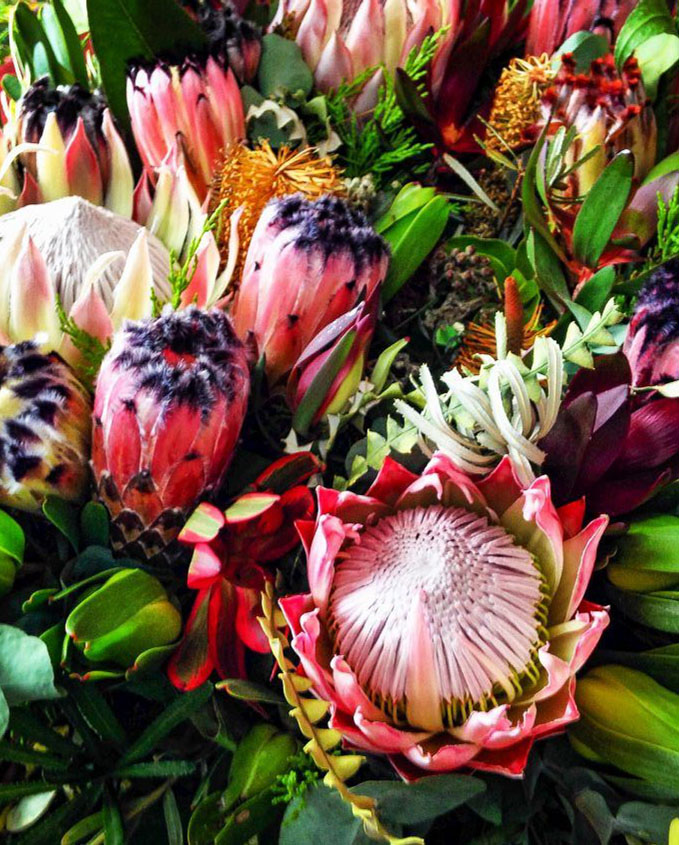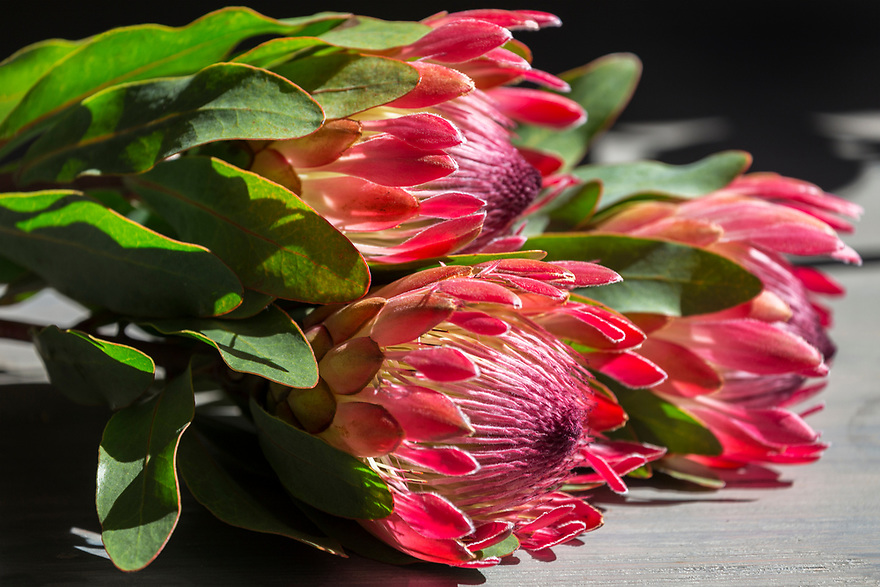King protea blooms are absolutely stunning! “Prehistoric,” “Dinosaur-like,” “Out of this World,” “Star Wars Flowers.” When people see these flowers for the first time these are some of the (surprisingly accurate) things they say!
Ancestors of these plants date back to 100 million years ago and therefore are considered some of the oldest families of plants on Earth.
King protea is a distinctive member of the genus Protea, having the largest bloom in this genus. Botanically named Protea cynaroides, this bloom is the national flower of South Africa. Over time, they have adapted to survive wildfires! Because of this ability, these blooms are a symbol of rebirth.
With thick stems and large dark green, glossy leaves, the king protea is a woody shrub. Plants are typically three feet tall when fully grown but can range from 1 foot to 6 feet. The “flowers” of these plants are composite flower heads, meaning they contain a collection of flowers in the center, surrounded by large colorful bracts.

The flower heads themselves range from 5 to 12 inches in diameter. The most prized variety of this bloom has soft pale pink bracts with a silvery sheen. Colors of the bracts range from creamy white to a deep crimson.
Healthy plants typically produce between 6 and 10 flower heads per season but some exceptional plants can produce up to 40 on one plant! About 114 species of the genus Protea are known.
With leaves that absorb moisture from the air that collects on the surface of the leaves, King protea flowers obtain all the water they need from fog. While these flowers have no scent, they are a rich source of nectar for many pollinators. Their nectar attracts sunbirds, sugar birds, honey bees, and beetles.
The father of modern botany and taxonomy, Carl Linnaeus, named this flower in 1735 after the Greek God Proteus. In Greek mythology, Protheus had a miraculous ability to change shape and form at his will. This name is fitting because different varieties of protea are available in a diverse array of colors, shapes, and sizes.

These flowers can be found naturally in shrublands anywhere from sea level to altitudes of nearly 5,000 feet! They grow in areas exposed to direct sunlight with dry, hot summers and cold winters.
Because much of the natural habitat of these flowers is subject to wildfires, some varieties of this bloom have adapted over time to survive these devastating natural disasters. Each stem contains multiple dormant buds, so once the fires burn out, the dormant buds emerge in a riot of color. Due to this, the species has become synonymous with rebirth.
National flower of South Africa, The king protea is one of South Africa's most recognizable symbols, alongside the leaping springbok and the country's rainbow-colored flag. According to the South African government, the flower is "an emblem of the beauty of our land and the flowering of our potential as a nation in pursuit of the African Renaissance".










Leave a comment